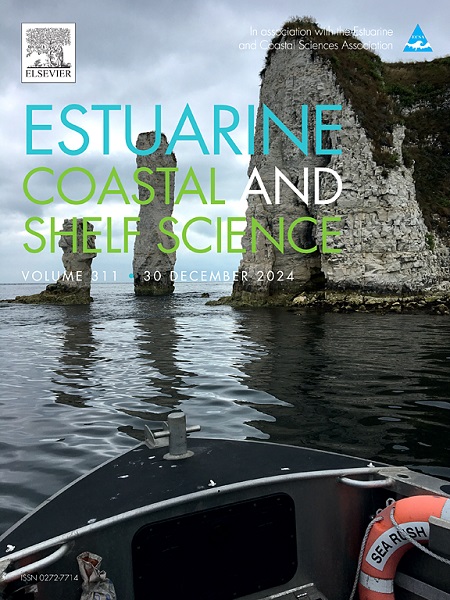Biodiversity and spatial heterogeneity of fish communities in response to geo-environmental disturbances
IF 2.6
3区 地球科学
Q1 MARINE & FRESHWATER BIOLOGY
引用次数: 0
Abstract
Coastal ecosystems are intricately connected to human life. However, increasing human activities have exerted significant pressure on coastal fish communities. Understanding the relationship between fish communities and geo-environmental disturbances is essential for the scientific development of fish conservation and environmental restoration strategies. Despite this importance, our understanding of this relationship remains limited. To address this gap, we established 40 sampling points along the coast of Guangdong in the autumn of 2020 to enhance our understanding of how geo-environmental disturbances have affected the spatial pattern of fish communities. The fish communities along the coast of Guangdong were broadly categorized into three distinct regions (A, B, and C), which were primarily affected by geo-environmental factors including longitude, latitude, depth, and environmental disturbances such as bottom trawling. Notably, biodiversity indicators such as Shannon, Delta+, and FDiv varied significantly in different regions. They were negatively correlated with both longitude and latitude, but positively correlated with water depth and environmental disturbances (W). Furthermore, FDiv served as a critical link between the spatial heterogeneity of fish communities and the geo-environmental disturbances. The spatial average variation degree (SAVD) was positively correlated with biodiversity, but exhibited an opposite pattern with fish community stability. Fish species that significantly contributing to the spatial heterogeneity and stability of fish communities should be prioritized for protection. The results of this study provided valuable insights for developing effective fish conservation strategies within the coastal ecosystem.
地质环境扰动下鱼类群落的生物多样性和空间异质性
沿海生态系统与人类生活有着错综复杂的联系。然而,人类活动的增加给沿海鱼类群落带来了巨大的压力。了解鱼类群落与地质环境扰动之间的关系对鱼类保护和环境恢复策略的科学发展至关重要。尽管如此,我们对这种关系的理解仍然有限。为了解决这一差距,我们于2020年秋季在广东沿海建立了40个采样点,以加深我们对地质环境干扰如何影响鱼类群落空间格局的理解。广东沿海鱼类群落可划分为A、B、C 3个区域,主要受经度、纬度、深度等地质环境因子和底拖网等环境扰动的影响。Shannon、Delta+、FDiv等生物多样性指标在不同区域差异显著。与经纬度呈负相关,与水深和环境扰动呈正相关(W)。此外,FDiv是鱼类群落空间异质性与地质环境扰动之间的重要纽带。空间平均变异度(SAVD)与生物多样性呈显著正相关,与鱼类群落稳定性呈负相关。对鱼类群落空间异质性和稳定性有显著贡献的鱼种应优先得到保护。本研究结果为在沿海生态系统内制定有效的鱼类保护策略提供了有价值的见解。
本文章由计算机程序翻译,如有差异,请以英文原文为准。
求助全文
约1分钟内获得全文
求助全文
来源期刊
CiteScore
5.60
自引率
7.10%
发文量
374
审稿时长
9 months
期刊介绍:
Estuarine, Coastal and Shelf Science is an international multidisciplinary journal devoted to the analysis of saline water phenomena ranging from the outer edge of the continental shelf to the upper limits of the tidal zone. The journal provides a unique forum, unifying the multidisciplinary approaches to the study of the oceanography of estuaries, coastal zones, and continental shelf seas. It features original research papers, review papers and short communications treating such disciplines as zoology, botany, geology, sedimentology, physical oceanography.

 求助内容:
求助内容: 应助结果提醒方式:
应助结果提醒方式:


